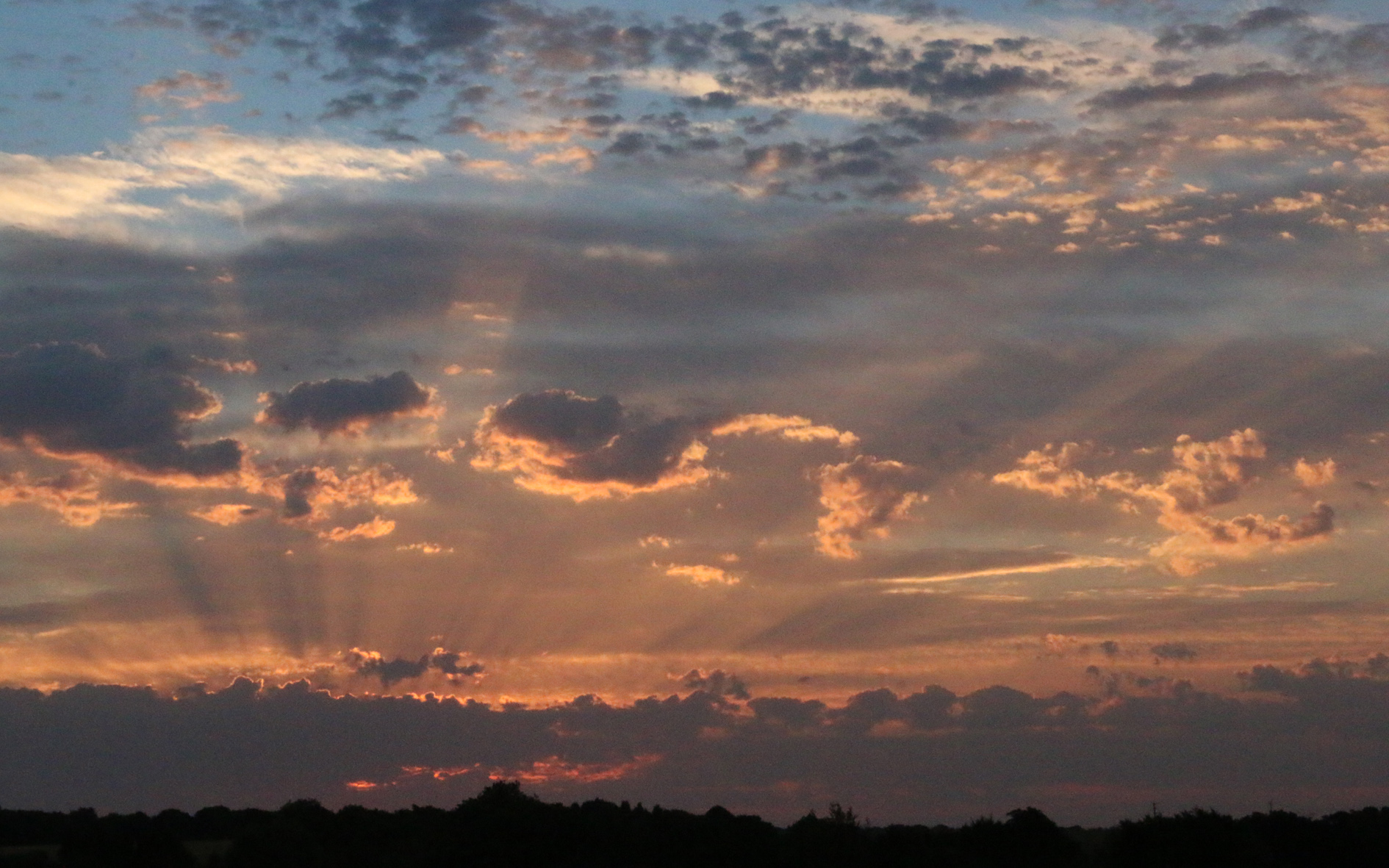Most amateur observers will have either their own domestic garden or perhaps a small paddock in which to place a weather station. Very few will have an ideal site. As a result, buildings, hedges, trees and hard surfaces are likely to be prevalent. Therefore the ‘perfect’ site for accurate and professionally comparable data will not be possible. However, within each site, the placing of instruments must be considered carefully to minimise distortion of the results thus the best compromise obtained. Under certain circumstances, as outlined in a later chapter, results could be meaningless.
If the chosen site is compromised by factors that affect the accuracy of the results it might be wise to consider whether paying up to £1,000 for a professional station with precision instruments is justified. Each individual person can only make that decision. Whatever equipment is purchased or in whatever position it is placed, the hobby can become an interesting and absorbing one that will grow more relevant with passing years as comparisons can then be made over various time intervals.
The author started his observations as a teenager using a Six’s maximum / minimum thermometer placed under a bird table to obtain shade from the sun and a small domestic wall barometer. Results were plotted on sheets of narrow graph paper glued to make a continuous roll. Sixty years ago there were no computers with which to make recordings or calculations and graphs had to be drawn manually.
However limited the first station is with start up instruments, additional equipment can be purchased to extend the data collected, as finance permits. There has never been a better time for the range of instruments, at modest prices, recently available to the amateur observer. The introduction of electronics to this hobby has made so much more possible. It is important to realise that budget systems often do not make provision for upgrading at a later date. A budget system will provide more worthwhile data in a site with limited exposure than an expensive, professional station that can only be placed in a very sheltered position.
Finally, it is realistic to expect that an inexpensive instrument or station might have a very limited life when permanently exposed to the elements whereas professional equipment, when used with care and well maintained, could last for ten or even twenty years.
It is important that safety is a major consideration when erecting any instrument that requires using an aid, such as a ladder or steps, to position it well above ground level. From time to time there might be a need for maintenance on certain equipment so ready access must also be born in mind.
Temperature
Placing a thermometer on a shaded wall will mean that some of the warmth from the wall will affect the results, transferring heat in winter and reducing values in high summer, as no air will be able to circulate freely around the instrument. Placing a thermometer on a north-facing wall to avoid sun shining on the instrument will mitigate this problem, except at full summer, when the early morning and late evening rays will strike the instrument. In winter strong northerly and easterly winds will mean that wind chill depresses the results and the complication of heat transference from the wall will be an unknown but contributory factor.
The surrounding area will preferably be of short grass to give accurate results. Any thermometer placed near buildings or above artificial surfaces such as tarmac, concrete, paving, will be affected by their influence as they absorb warmth from sunshine that will inflate daytime temperatures and will be a lag to results as temperatures fall when evening approaches. This effect will also be prevalent in winter when a solid surface will depress results as it absorbs and holds onto the cold.Best practice is to site the instrument from 1.2 metres to 2 metres above ground level to minimize the effect of ground heat.Ideally, the thermometer should be placed in a ventilated screen (details later in chapter) that allows the air to circulate freely around it and be shaded from sunshine. This will also prevent any precipitation settling on the instrument. More details of various screens are discussed later in this chapter
Wind
The amount of exposure to a free flowing air mass will dictate how accurate the results are. A hand-held anemometer will often be the first or only choice but buildings, hedges, fences or trees at a distance will affect the results. Put simply, within reason, the higher the better. An anemometer placed at ridge height of a house or bungalow will provide more realistic values than a hand-held unit. If placed just above the ridge, readings will be affected by the wind blowing up and over the roof. However, if equipment and facilities allow, an anemometer is ideally placed on a pole several metres above ridge height. To increase accuracy, the pole should have restraining wires attached to stop it swaying in high winds. The factor to bear in mind will be the influence of surroundings buildings or trees that, when the wind is from certain directions, will affect the accuracy of the results. The vane must be aligned with true north before finally securing the unit.
Rain
A rain gauge should be placed as far from buildings, hedges and trees as possible and not where rain bouncing off objects or blown into the receptacle will affect the results. A very sheltered site will produce a localized calm area that can in fact, increase the rainfall falling into the gauge. Conversely, a very open site can suffer from strong winds that may carry some raindrops across the top of the gauge and not allow them to drop into the funnel. Ideally the gauge should be placed on short grass that is preferably on flat ground. A gauge placed on or near solid ground could suffer from precipitation bouncing off the hard surface and entering the funnel.
The internationally recommended height of a gauge above ground level is 50 – 150cm but in the UK the suggested height is 30cm. This common height will allow comparisons to be made with other rain gauge sites. At this position the likely hood of wind blown debris, such as when grass cutting, entering the gauge will be minimized. When snowfall is heavy, a more realistic sample is obtained than a unit at ground level, which could be overwhelmed with snow. For best results the gauge must be level and firmly placed in the ground. Any gauge placed on a pole could suffer from movement in high winds that would affect the amount of precipitation collected.
Solar and UV

 These sensors are often included with the more expensive weather stations or as with some models, can be added at a later stage of development. The sensor needs to be at a height of at least 1.5metres, I suggest, in order for the sun when it is low on the horizon, to continue to be in sight of the sensor and does not therefore cast a shadow over it. In winter particularly, the sun can quite easily drop behind buildings or trees on the horizon, which may be some distance away. The spirit levels supplied with these instruments must be used to ensure the sensors are on a horizontal plane and checked periodically.
These sensors are often included with the more expensive weather stations or as with some models, can be added at a later stage of development. The sensor needs to be at a height of at least 1.5metres, I suggest, in order for the sun when it is low on the horizon, to continue to be in sight of the sensor and does not therefore cast a shadow over it. In winter particularly, the sun can quite easily drop behind buildings or trees on the horizon, which may be some distance away. The spirit levels supplied with these instruments must be used to ensure the sensors are on a horizontal plane and checked periodically.Evaporation, Humidity and Sunshine
This data is calculated within the professional stations using the instruments described above and automatically displayed on a monitor.
Screens
As discussed in paragraphs above, for best results, a screen of some design is preferable in which to house thermometers and other instruments that need protection from the elements. A competent DIY person can make a homemade screen, with sufficient and correctly placed louvres. It is essential to have louvres on all four sides of the screen that allow air to freely move through them but with a sufficiently small gap to stop strong winds from influencing the readings or precipitation entering the screen. The floor and top must have slots between the boarding to enable air to enter freely but an additional top covering must stop rain from falling into the screen. As with all screens it is vital to have a white gloss finish on all visible surfaces to reflect solar radiation. There are a variety of screens available on the market ranging from around £50 to over £600. The simplest is a self-assembly screen made from wood. This requires not only assembling but also several coats of white gloss paint to protect it, but more importantly, to reflect solar radiation. The paintwork will need wiping down at regular intervals to maintain the whiteness and additional coats of white gloss applied as necessary.
There are a number of ready-made screens that range from small, plastic units to a large professional, meteorological standard screen called a Stevenson Screen. These are made from plastic with the more expensive items constructed from polycarbonate and aluminium.
A screen should be positioned from 1.2 to 2 metres above the ground so that there is no transmission of heat in summer or cold in winter, from the ground beneath.
Stands
Cables
Although many current weather stations send their data wirelessly, often the anemometer and weather vane need a cable with which to transmit data to the monitor. Some weather stations are totally reliant on cabling. When cables are employed, it makes good sense to, where possible, place these in a trench, sufficiently deep, that no gardener accidentally digs it up or rodents bite into it when burrowing below the surface of the ground.







